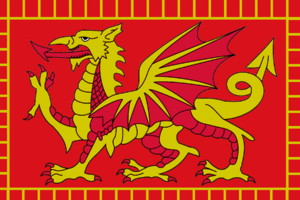East Goths
This article is a work-in-progress because it is incomplete and pending further input from an author. Note: The contents of this article are not considered canonical and may be inaccurate. Please comment on this article's talk page to share your input, comments and questions. |
 The Dragon of Gothica, a historic symbol commonly associated with East Gothic patriotism | |
| Total population | |
|---|---|
| 72,000,000 approximate | |
| Regions with significant populations | |
| Languages | |
| East Gothic Old Gothic (historical) | |
| Religion | |
| Levantine Catholicism East Gothic faith (historical) | |
| Related ethnic groups | |
| Gothic people |
The East Goths are an ethnic and cultural group native to Yonderre, today considered part of (and thus largely replaced by) the Yonderian ethno-cultural group.
East Gothic culture, as distinct from its West Gothic neighbours, evolved in the later medieval period. Following the Conquest of Joanusterra the East Gothic culture further diversified in the early modern period, owing largely to Bergendii cultural influence. During the Yonderian Golden Age of the nineteenth century, the concepts of East Gothic and Bergendii cultural and ethnic groupings became muddled as a common Yonderian ethno-cultural group emerged, founded on principles formed through historical and cultural connections rather than based on racial heritage.
Some East Goths maintain their separateness from the common Yonderian group, a notable example being those who adhere to the ethno-nationalist Gothic People's Party.